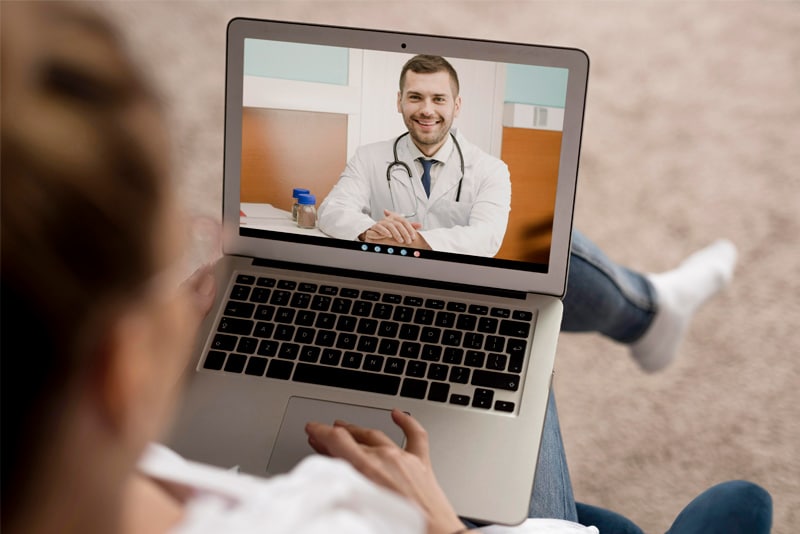A lot has been happening with regards to reporting remote patient monitoring (RPM) aka remote physiologic monitoring and our medical billing and coding company is keeping track of the developments.
The Centers for Medicare and Medicaid Services (CMS has expanded reimbursement codes available for RPM over the years in order to help providers meet the growing demand for virtual care services. RPM involves the use of digitally connected non-invasive devices (e.g., pulse-oximeters, home blood pressure monitors) by clinicians to remotely monitor their patients’ temperature and pulmonary function, blood pressure, and other relevant physiology to track symptoms and disease progression. The five primary Medicare RPM codes are CPT codes 99091, 99453, 99454, 99457, and 99458.
In 2019, CMS had defined RPM as services provided to patients with chronic conditions, but confirmed in the 2021 Final Rule that RPM services may be medically necessary for patients with acute conditions as well as patients with chronic conditions. RPM has proved very useful during the COVID-19 pandemic, allowing providers to collect and evaluate patient physiologic data to develop and treat patients with a chronic and/or acute health illness or condition.
On December 1, 2020, the Centers for Medicare and Medicaid Services (CMS) had issued new rules related to RPM reimbursement under the Medicare program. On January 19, 2021, CMS published a correction to its guidance on 2021 Medicare rules for RPM services. The changes, effective January 1, 2021, revise the preamble commentary in the Medicare Physician Fee Schedule Final Rule published on December 1, 2020. Language that was inadvertently deleted from the Final Rule has been added. Let’s take a closer look at the latest updates for RPM services.
- CPT codes 99457 and 99458 – CMS issues clarification on “interactive communication”
CPT code 99457 Remote physiologic monitoring treatment management services, clinical staff/physician/other qualified healthcare professional time in a calendar month, requiring interactive communication with the patient/caregiver during the month; first 20 minutes.
CPT Code 99458 Each additional 20 minutes (to be listed separately in addition to the code for primary procedure.) 99458 is an add-on code for CPT Code 99457 and can be utilized for each additional 20 minutes of remote monitoring and treatment management services provided.
CMS allows the use of real-time interactive audio-video technology to meet the face-to-face element of an E/M service. The required 20 minutes of time associated with CPT codes 99457 and 99458 includes care management services, as well as synchronous, real-time interactions with the patient.
In its latest clarification, CMS stated that the 20-minutes of intra-service work associated with CPT codes 99457 and 99458 includes a practitioner’s time engaged in “interactive communication” as well as time engaged in non-face-to-face care management services during the month.
- RPM Billing by One Practitioner, Per Patient, Per Period
CMS also clarified that CPT codes 99453 and 99454 should be reported only once during a 30-day period. “Even when multiple medical devices are provided to a patient, the services associated with all the medical devices can be billed by only one practitioner, only once per patient, per 30-day period, and only when at least 16 days of data have been collected; and that the services must be reasonable and necessary,” CMS explained.
CMS noted that when a more specific code is available to describe a service, CPT indicates that the more specific code should be billed. “We believe that there are additional, more specific codes available for billing that allow remote monitoring (for example, CPT code 95250 for continuous glucose monitoring and CPT codes 99473 and 99474 for self-measured blood pressure monitoring)” CMS said.
Other RPM rules in the 2021 Physician Fee Schedule released in December 2020 (as listed by mhealthintelligence.com) include:
- Once the public health emergency (PHE) ends, a care provider must have an established patient-physician relationship for RPM services to be furnished.
- Consent to receive RPM services may be obtained at the time that RPM services are furnished.
- Auxiliary personnel (including contracted employees) may provide services described by CPT codes 99453 and 99454 incident to the billing practitioner’s services and under their supervision.
- The mHealth technology supplied to a patient in an RPM program must be defined as a medical device under Section 201(h) of the Federal Food, Drug, and Cosmetic Act and must be reliable and valid. In addition, the data coming from these platforms must be electronically (i.e., automatically) collected and transmitted rather than self-reported.
- After the PHE ends, 16 days of data must be collected and transmitted every 30 days to meet the requirements to bill CPT codes 99453 and 99454.
- Only physicians and NPPs who are eligible to furnish E/M services may bill RPM services.
- While CPT code 99091 (Collection and interpretation of physiologic data (e.g., ECG, blood pressure, glucose monitoring) digitally stored and/or transmitted by the patient and/or caregiver to the physician or other qualified health care professional, qualified by education, training, licensure/regulation (when applicable) requiring a minimum of 30 minutes of time, each 30 days) can only be furnished by a physician or other qualified healthcare professional, CPT codes 99457 and 99458 can be furnished by a physician or other qualified healthcare professional, or by clinical staff under the general supervision of the physician.
The best way for practitioners to ensure accurate coding and claim submission for RPM services is to consult an experienced medical billing and coding service provider.




